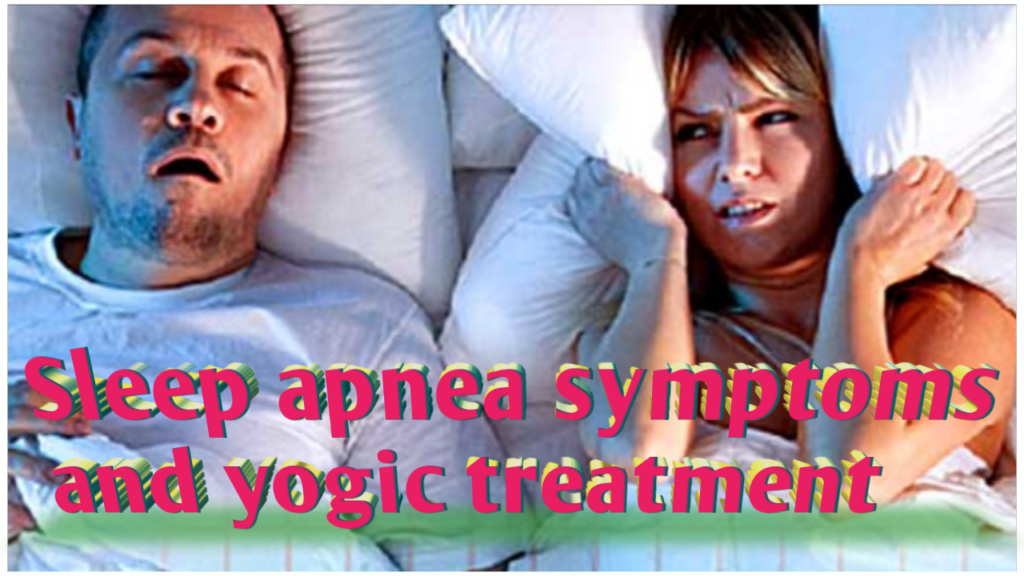My dear friends, welcome to this blog, today I will tell you about sleep apnea. Slip apnea is becoming very common in the present times. People do not have time from their work. They are not able to pay attention to their body and due to regular routine and food, diseases like sleep apnea are occurring inside the human body, which is the cause of many diseases. Today we discuss about this in detail. If you must read the blog from beginning to end, then all your problems will be solved. You will get information about sleep apnea. Now without wasting time, let’s know about it in detail.Sleep apnea is a sleep disorder characterized by pauses in breathing or shallow breaths while sleeping. These pauses can last from a few seconds to minutes and occur repeatedly throughout the night.

There are three main types of sleep apnea:
1. Obstructive sleep apnea (OSA)
The most common type, where the airway becomes blocked, usually due to relaxed throat muscles.
2. Central sleep apnea (CSA)
The brain fails to send proper signals to the breathing muscles.Sleep apnea can lead to several health problems, including high blood pressure, heart disease, stroke, and type 2 diabetes.
3. Mixed Sleep Apnea (MSA)
This type of sleep apnea combines elements of both OSA and CSA.It’s important to consult a doctor if you suspect you or someone you know may have sleep apnea.
Symptoms of sleep apnea
Friends, now know what symptoms are found in humans in sleep apnea.
Breathing interruptions
During sleep, a person with sleep apnea may experience breathing interruptions, followed by loud snoring or gasping sounds as the body struggles to breathe.
Fatigue and daytime sleepiness
Sleep apnea can disrupt sleep patterns, leading to fatigue and daytime sleepiness.
Difficulty concentrating
Lack of good sleep can affect cognitive function, including concentration and memory.
Hormonal imbalance
Sleep apnea has been linked to hormonal imbalances, including low testosterone levels.
Causes and Risk Factors
Some of the risk factors that contribute to sleep apnea include
Obesity
Being overweight or obese increases the risk of sleep apnea.
Age
Sleep apnea is more common in older adults.
Family history
If your family has a history of sleep apnea, you may be at a higher risk.
Smoking
Smoking can increase the risk of sleep apnea.
Poor diet
A diet rich in processed foods, sugary foods, and saturated fats can contribute to weight gain and other conditions that increase the risk of sleep apnea.
Neck and throat anatomy
Abnormal anatomy in the neck and throat can increase the risk of sleep apnea.
Treatment and prevention
Friends, now we know how yoga can help humans to overcome this disease Treatment of sleep apnea often involves a multi-step approach, including—-
Strengthens the muscles of the trachea
Yogasanas strengthen the muscles of the trachea, which improves the flow of air during sleep.
Reduces stress
Yoga helps reduce stress, which is a major cause of sleep apnea.
Relaxes the body
Yogasanas relax the body and improve the quality of sleep.Which yogasanas can be useful?
Bhramari Pranayama
This pranayama helps in reducing stress and calming the mind.
Anulom Vilom Pranayama
This pranayama regulates breathing and increases the level of oxygen in the body.
Bhujangasana
This asana makes the spine flexible and opens the trachea.
Shashankasana
This asana strengthens the abdominal and chest muscles.
Uttanasana
This asana improves blood circulation and reduces stress.
Other important points
Seek guidance from a yoga teacher
It is important to seek guidance from a yoga teacher before performing yoga asanas, especially if you have any health problems.
Practice regularly
Practice regularly to get the most out of yoga.
Follow a healthy lifestyle
Eat a healthy diet, exercise regularly and get enough sleep.
Consult a doctor
Along with yoga, it is important to follow your doctor’s advice.
Note—
Yoga is not a cure for sleep apnea, but it can help reduce the symptoms of this condition.
1. Weight loss
Weight loss can help reduce the severity of sleep apnea symptoms.
2. Exercise
Regular exercise can help lower body mass index (BMI) and reduce other conditions that contribute to sleep apnea.
3. CPAP therapy
Continuous positive airway pressure (CPAP) therapy involves wearing a mask that delivers air pressure to the airways, keeping them open during sleep.
4. Mandibular advancement device (MAD)
This is a removable oral appliance that moves the jaw forward to open the airway during sleep.
5. Surgical Treatment
In some cases, surgical treatment, such as uvulopalatopharyngoplasty (UPPP), may be necessary.
Adverse Effects of Sleep Apnea
Untreated sleep apnea can lead to a number of serious complications, including—-
1. Heart Disease
Sleep apnea has been linked to an increased risk of heart failure, high blood pressure, and stroke.
2. Type 2 Diabetes
Sleep apnea may contribute to insulin resistance and an increased risk of Type 2 Diabetes.
3. Depression
Sleep apnea can lead to depression, anxiety, and other mood disorders.
4. Impaired Cognitive Function
Frequent disruptions in sleep patterns can impair cognitive function, including memory, concentration, and problem-solving skills.
If you or someone you know is experiencing symptoms of sleep apnea, seek medical help from a qualified healthcare professional.